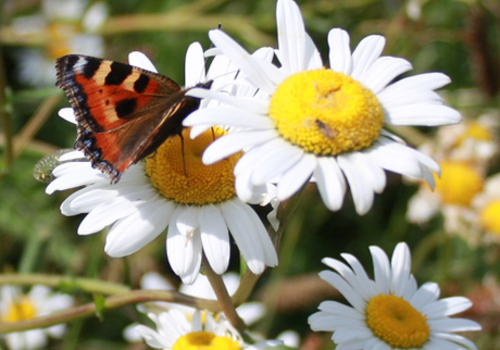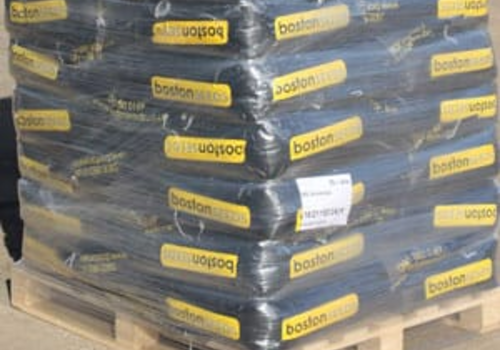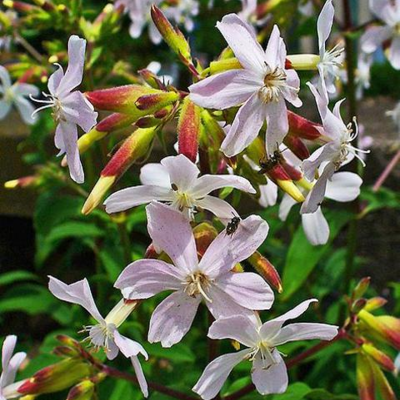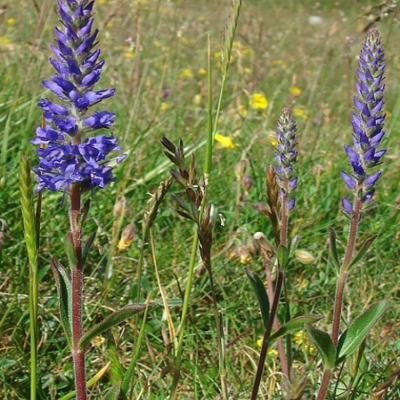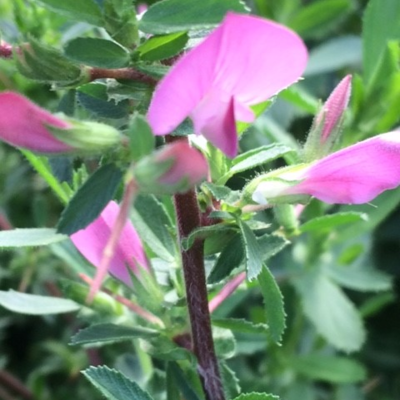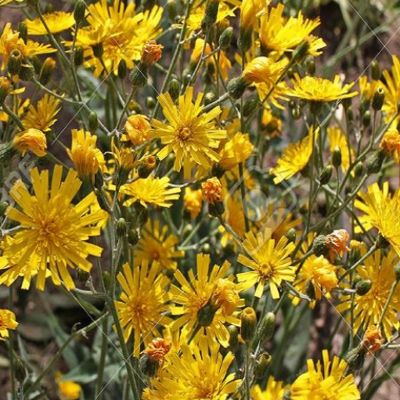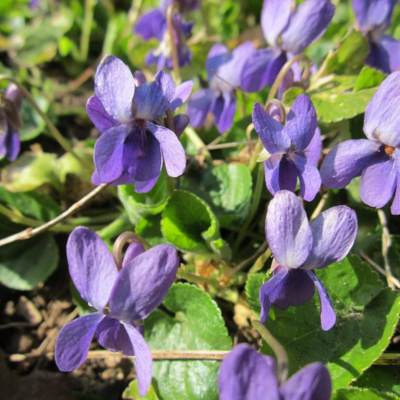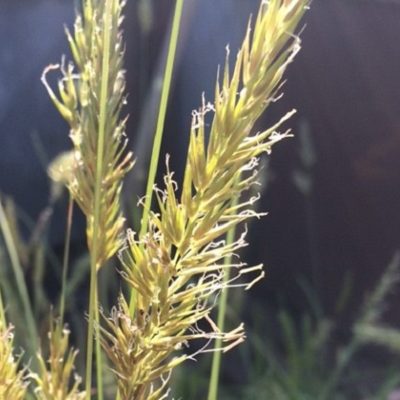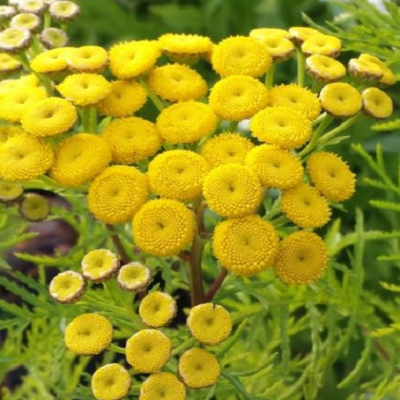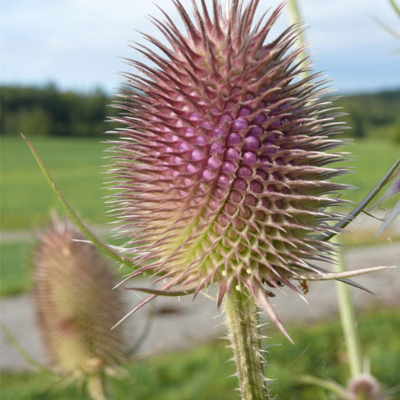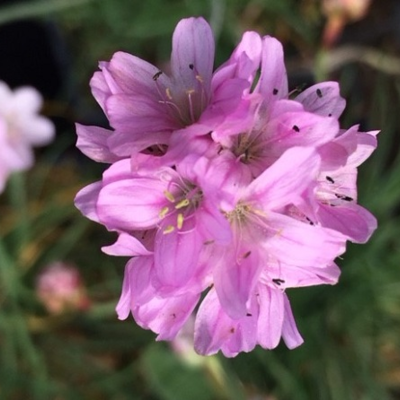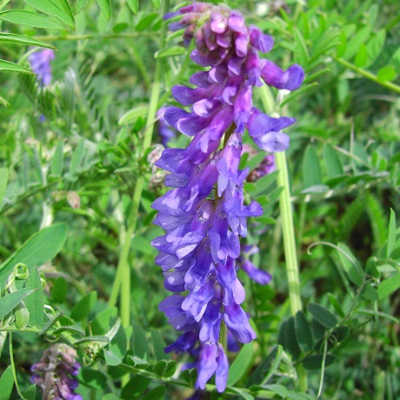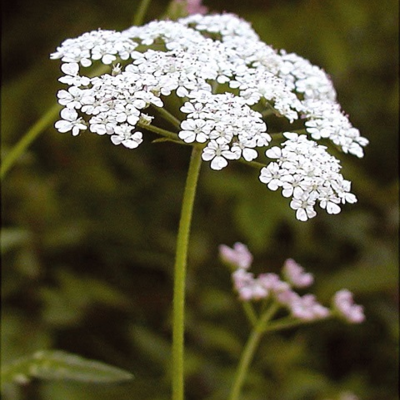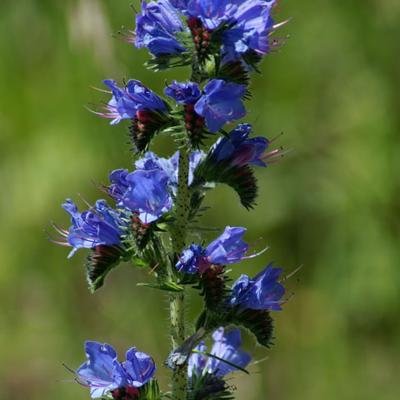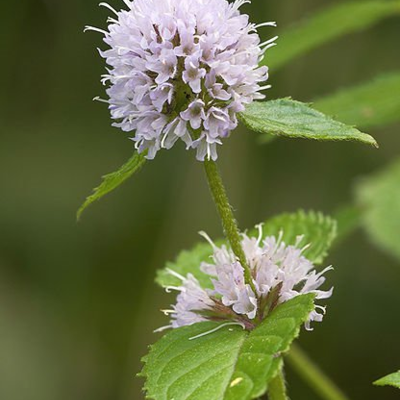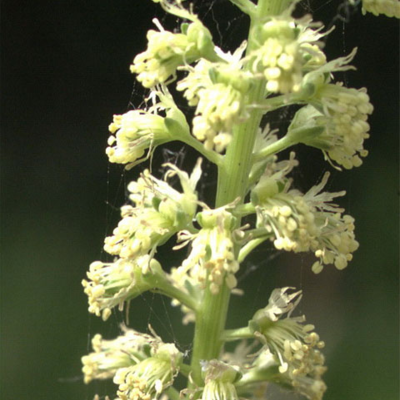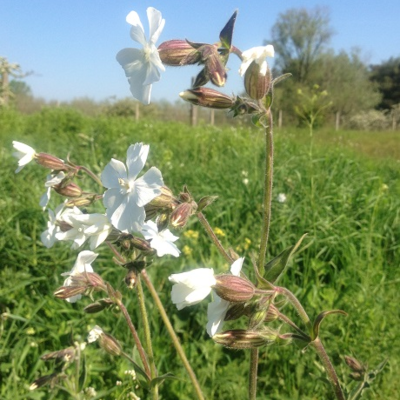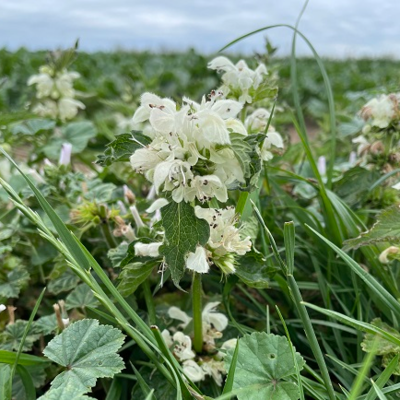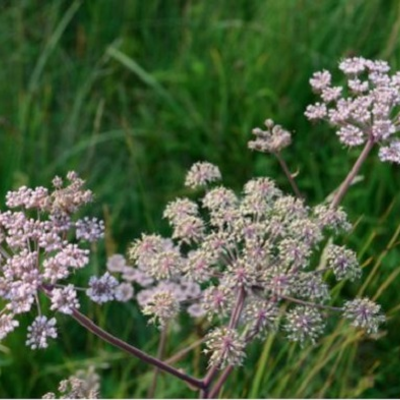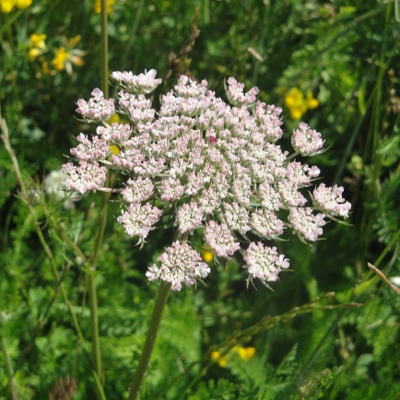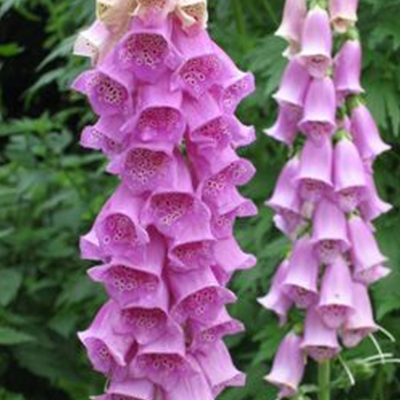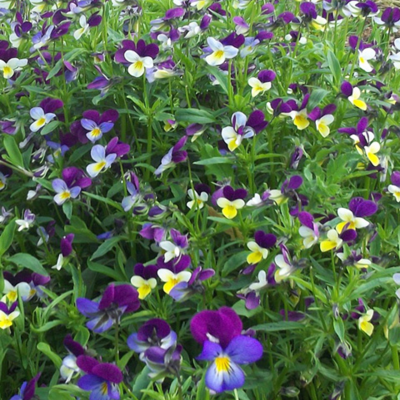Wildflower Plants A to Z
Choose from our entire range of over 100 wildflower plug plants, expertly grown in our very own nursery from high quality, UK native wildflower seed. Our wildflower plugs are ready to be planted straight out into your garden or meadow as soon as they arrive, all year round. Buying individual wildflower plants is one of the best ways to establish your chosen wildflower species, planted individually or as part of a more diverse meadow created from our range of wildflower seeds.
Don't hesitate to get in touch to speak to one of our experts or request a catalogue to view our full range. Ordering regularly or looking for large volumes? Click here to apply for a trade account today - we review all applications within one working day.
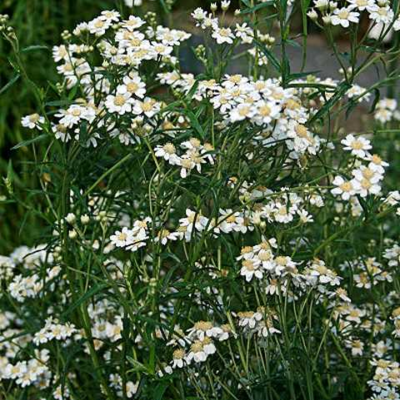

Plants for Pollinators highlights plants selected by the RHS as scientifically proven to tackle the declines in bees, butterflies and other pollinators.
These branches of pearly-white petals, framing fuzzy cream florets, are nothing to sneeze at! Named for its strong scent, its leaves can also be used to repel harmful insects (though it’s still perfect for pollinators), and it’s sometimes used as a herbal remedy. Hardy and drought-resistant.
- Type: Perennial
- Height: 25-50cm.
- Flowers: July-September
- Soil Requirement: Moist but well-drained
- Light Requirement: Full sun or partial shade
- Natural Habitat: Marshes, water margins
- Also known as: Ball Of Snow, Goosetongue, Seven Years’ Love
The subtly sweet-scented Soapwort was named as it can be used to make soap, but its clusters of pristine white and pale pink petals bring to mind a bubble bath, washing up beds and borders as it self-seeds easily. A very useful and hardy herb to have around! Avoid placing near fish ponds.
- Type: Perennial
- Height: 50-70cm.
- Flowers: June-September
- Soil Requirement: Moist but well-drained
- Light Requirement: Full sun
- Natural Habitat: Footpaths, river banks, hedges
- Also known as: Boston Pink, Jill-Run-By-The-Street, World’s Wonder
Produces dense spikes of miniature florets in regal blues and violets, alongside long, sharp leaves with a subtle silver tint. The sky’s the limit with these showy summer wildflowers: recommended for rockeries and brilliant in borders, this is a versatile and low-maintenance flower that’s practically made for a cottage garden.
- Type: Perennial
- Height: 30-60cm.
- Flowers: July-September
- Soil Requirement: Well-drained
- Light Requirement: Full sun
- Natural Habitat: Calcareous rocks and soils, grasslands
A shrub-like perennial that's usually found in infertile meadows and grasslands that compliments other species such as Vetch, Betony and Knapweed. Bold, red-pink, delicate flowers on erect, spiny stems.
- Type: Perennial
- Height: 40-50cm
- Flowers: July-September
- Soil requirement: Natural-acidic
- Light requirement: Full sun or partial shade
- Natural habitat: Grassland, meadows, roadsides
- Also known as: Women's War, Plough Tail
Likely named for its attractive foliage - forming in dense rosettes of mottles maroon leaves - one shouldn’t overlook its brilliant branching stems of yellow, daisy-like blooms, which helps to bring in the pollinators. An excellent ornamental flower which grows well in rockeries, meadows or mixed pots and baskets.
- Type: Perennial
- Height: 15-45cm.
- Flowers: June-September
- Soil Requirement: Well-drained
- Light Requirement: Full sun
- Natural Habitat: Grasslands, quarries
- Also known as: Leopard
These famous five-petalled flowers are so beloved that they’ve named their own colour after their beautiful purple colouration. Not only that, but they’re shade-tolerant, making them the perfect plant to sweeten woodland gardens or under hedges, especially in contrast to other famous springtime flora, such as the primrose. A simple flower that’s easy to mix with other meadows, with a wonderful sweet scent which helps to bring in butterflies!
- Type: Perennial
- Height: 5-10cm.
- Flowers: March-April
- Soil Requirement: Moist or well-drained
- Light Requirement: Full sun to full shade
- Natural Habitat: Grassland, woodland, hedgerows
- Also known as: Florist’s Violet, Sweet Pansy
This item is currently unavailable
These early-flowering, light maroon spikelets are wonderfully versatile, and are popular picks for fields and as potted plants for a variety of reasons: as its name suggests, Sweet Vernal-Grass has a sweet, almost vanilla-like taste to it when chewed, alongside its distinct aroma of cut hay. A valuable food plant for brown and skipper butterflies larvae.
- Type: Perennial
- Height: 30-60cm.
- Flowers: April-July
- Soil requirement: Well-drained
- Light requirement: Full sun
- Natural habitat: Wildflower meadows, margins
- Also known as: Vernal Grass, Spring Grass
This item is currently unavailable
These medium-to-tall-growing plants are unique both for their clusters of button-like blooms the colour of butter and their aromatic, ferny leaves which can even be used as an excellent deterrent for pests! Eccentric and an earnest self-seeder, those cautious of the tansy can grow them in a container, but in beds and borders, it attracts bees and butterflies, and even improves the soil by adding potassium!
- Type: Perennial
- Height: 30-90cm.
- Flowers: July-September
- Soil Requirement: Well-drained
- Light Requirement: Full Sun
- Natural Habitat: Wetlands, rough grassland, verges
- Also known as: Buttonweed, Hind-Heal, Immortality

Plants for Pollinators highlights plants selected by the RHS as scientifically proven to tackle the declines in bees, butterflies and other pollinators.
Grows as a spiky spherical flower head coloured by bands of lavender florets. An ideal meadow plant which naturalises well and grows tall, and its seed heads are known to attract the wildlife. All in all, it sure does have a sharp sense of style!
- Type: Bienniel
- Height: 60–200cm.
- Flowers: July-August
- Soil Requirement: Well-drained or moist
- Light Requirement: Full sun or partial shade
- Natural Habitat: Grasslands, river banks, woodlands
- Also known as: Adam’s Flannel, Shepherd’s Staff, Venus’ Basin
Bunches of rounded, pink flowers provide an abundant supply of pollen and nectar for bees and other pollinators. Commonly found on coastal cliffs, beaches and sandunes all around the UK, these leaves are closely packed together to save moisture in the salt-laden sea air.
- Type: Perennial
- Height: 5-22cm
- Flowers: May to September
- Soil requirement: Sandy, well-drained
- Light requirement: Full sun
- Natural habitat: Coastal cliffs, grassland, salt marshes, rock gardens
- Also known as: Sea Thrift, Sea Pink, Cliff Clover

Plants for Pollinators highlights plants selected by the RHS as scientifically proven to tackle the declines in bees, butterflies and other pollinators.
The violet and royal blue petals that these soaring spires of petals bear are just the beginning of this flighty flora's beautiful oddities: blooming with longer, feathery-looking flowers, and even the familiar seed pods it shares with others in the legume family ripen into a deep black colour. A quirky and attractive climbing plant which does its best when planted with other tall flora to support it.
- Type: Perennial
- Height: 60–120cm.
- Flowers: June-August
- Soil Requirement: Well-drained
- Light Requirement: Full sun
- Natural Habitat: Hedgerows, river banks, woodlands
- Also known as: Bird Vetch, Canada Pea, Tine Grass
This is a medium to tall in height hairy plant that can stand around 1.5 meters tall. The flower colours can vary from a deep pink-purple to a pale pink-white.
- Type: Annual or Biennial
- Height: 60-120cm
- Flowers: July - September
- Soil requirement: Neutral, well-drained, dry soils
- Light requirement: Full sun or partial shade
- Natural habitat: Woodland edges, ungrazed pasture, embankment

Plants for Pollinators highlights plants selected by the RHS as scientifically proven to tackle the declines in bees, butterflies and other pollinators.
This winding wildflower boasts a long, speckled stem with thin leaves, and striking spikes of sapphire flower heads bearing red, tongue-like stamens. Don't be rattled by its slightly thorny exterior- Viper's Bugloss is a lot more beauty than bite, making for a charming plant for borders, and it benefits pollinators, too!
- Type: Biennial
- Height: 25–75cm.
- Flowers: June-September
- Soil Requirement: Well-drained
- Light Requirement: Full sun
- Natural Habitat: Grassland, coastal, heathland
- Also known as: Blue Devil, Cat’s Tail, Snake Flower
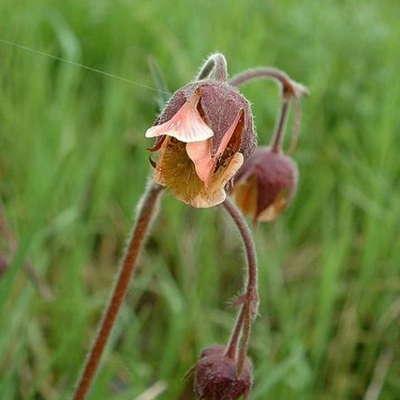

Plants for Pollinators highlights plants selected by the RHS as scientifically proven to tackle the declines in bees, butterflies and other pollinators.
Though it prefers cool spots in the garden, the Water Avens are warmly-hued wildflowers, with gently nodding, burgundy stems and sepals- gorgeous enough on their own, but blooming into cups of peach-coloured petals that make the perfect addition to a pond-side palette!
- Type: Perennial
- Height: 30–45cm.
- Flowers: April-June
- Soil Requirement: Damp
- Light Requirement: Full sun to shade
- Natural Habitat: Coasts, woodlands, damp meadows
- Also known as: Chocolate Root, Indian Chocolate, Purple Avens
This is the perfect pond-side plant for those wanting a breath of fresh air! Produces globes of pale pink petals that are good for pollinators, and just as appealing are its aromatic leaves, which can even be used as a flavouring. Needless to say, this is one cool flower.
- Type: Perennial
- Height: 60-80cm.
- Flowers: July-October
- Soil Requirement: Moist
- Light Requirement: Full sun or partial shade
- Natural Habitat: Wet meadows, marshes, river banks
- Also known as: Fish Mint
Much like the wild mignonette, this tall and robust spire of fresh-looking, yellow-green petals adds a vibrant energy to a wild meadow as its verdant, branching stems of narrow leaves shoot up to the sky! Perfect for pollinators, and its colours can help bring nature back to a struggling spot as it tolerates poor soil.
- Type: Biennial
- Height: 100-150cm.
- Flowers: May-October
- Soil Requirement: Well-drained
- Light Requirement: Full sun
- Natural Habitat: Waste ground, roadsides, quarries.
- Also known as: Dyer’s Rocket, Dutch Pink, Jerusalem Ash
This item is currently unavailable

Plants for Pollinators highlights plants selected by the RHS as scientifically proven to tackle the declines in bees, butterflies and other pollinators.
This pristine white, five petalled perennial is also well known for producing a clovey scent at dusk, not only making it perfect for pollinators, but also making for a lovely plant indoors.
- Type: Perennial
- Height: 30-60cm.
- Flowers: May-October
- Soil Requirement: Well-drained
- Light Requirement: Partial Shade
- Natural Habitat: Roadside verges, hedgerows
- Also known as: Bull Rattle, White Cockle, White Robin

Plants for Pollinators highlights plants selected by the RHS as scientifically proven to tackle the declines in bees, butterflies and other pollinators.
White Deadnettle has pretty white flowers permeated with green, which appear in intervals along the stem in clusters. This nettle doesn't sting- in fact, it's a very sweet flower, which makes for a great early nectar and pollen source for bees, and its young heart shaped leaves can be used in salads or cooked.
- Type: Perennial
- Height: 15-30cm
- Flowers: March - December
- Soil requirement: Moist or well-drained
- Light requirement: Full sun to partial shade
- Natural habitat: Most of the UK apart from the far North, grassland, woodland, roadsides
- Also known as: Bee Nettle, Snake Flower, White Archangel
This item is currently unavailable

Plants for Pollinators highlights plants selected by the RHS as scientifically proven to tackle the declines in bees, butterflies and other pollinators.
Wild Angelica is a marshy wildflower boasting boisterous, tall-growing branches that are hairless and often tinted purple. Likewise, her bubbly bursts of bright white florets are often tinted with tiny pink spikes. The Wild Angelica was also once treasured as a decoration for cakes and confectionaries.
- Type: Perennial or biennial
- Height: 150–250cm.
- Flowers: July-September
- Soil Requirement: Moist but well-drained
- Light Requirement: Full sun
- Natural Habitat: Damp meadows, wet woodlands, fenland
- Also known as: Garden Angelica, Wild Celery
This item is currently unavailable
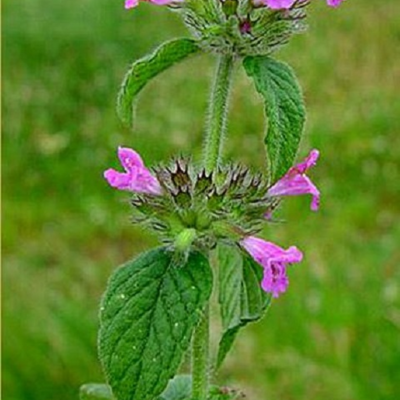

Plants for Pollinators highlights plants selected by the RHS as scientifically proven to tackle the declines in bees, butterflies and other pollinators.
Best known for their distinctly-shaped and aromatic leaves, the basil plant has a lot to provide inside the garden and out, as it produces whorls of royal purple and pink petals which are perfect for pollinators.
- Type: Perennial
- Height: 30-60cm.
- Flowers: July-September
- Soil Requirement: Well-drained, calcareous
- Light Requirement: Full Sunlight
- Natural Habitat: Dry meadows, forests, hedgerows
- Also known as: Cushion Calamint

Plants for Pollinators highlights plants selected by the RHS as scientifically proven to tackle the declines in bees, butterflies and other pollinators.
This well-known umbellifer is simple in its beauty, but generous, producing pleasing feathered foliage as well as fountains of foamy white florets, often with a dark red central flower. They're surprisingly eye-catching, making a bold statement in a wild meadow!
- Type: Biennial
- Height: 30-40cm
- Flowers: June-October
- Soil Requirement: Well-drained
- Light Requirement: Full sun
- Natural Habitat: Cliff sides, grasslands, roadsides
- Also known as: Queen Anne’s Lace

Plants for Pollinators highlights plants selected by the RHS as scientifically proven to tackle the declines in bees, butterflies and other pollinators.
Few flowers match the fairy-tale flair of the foxglove: its towering stems of majestic magenta bells feature heavily across myths as a source of healing and protective magic, and a favourite of fairies- we can’t confirm if that’s true, but they are a favourite of bees and butterflies! Best grown in the back of a border to frame other flowers. Make sure to handle with gloves.
- Type: Biennial
- Height: 60–150cm.
- Flowers: June-September
- Soil Requirement: Well-drained
- Light Requirement: Full sun or partial shade
- Natural Habitat: Forest borders, footpaths
- Also known as: Dragon’s Mouth, Fairy Bells, Thimble Flower


Plants for Pollinators highlights plants selected by the RHS as scientifically proven to tackle the declines in bees, butterflies and other pollinators.
Best known as a common culinary herb, the Wild Marjoram has an extra use in providing some fanciful flavour to your garden! Not only does it provide fragrant foliage, but its small, spiked stems also produce clusters of small, rich Byzantine purple buds, blooming into paler pink petals, providing an interesting mixed palette that can compliment both light and dark flower arrangements!
- Type: Perennial
- Height: 30-60cm.
- Flowers: July-September
- Soil Requirement: Well-drained
- Light Requirement: Full sun
- Natural Habitat: Grasslands, farmland, chalky soil
- Also known as: Oregano, Grove Marjoram, Wintersweet
A famous subject mentioned in Shakespearian stageplay, this lovely, hardy and hearty flower truly is the perfect colour of a midsummer night’s dream, with heart-shaped white or yellow petals stained purple in the centre, supposedly from being hit by one of Cupid’s arrows. The unique, whiskery patterns on each pansy are easy to fall in love with, and make for a spellbinding spectacle when scattered in borders or rockeries.
- Type: Annual
- Height: 15-30cm.
- Flowers: April-June
- Soil Requirement: Moist but well-drained
- Light Requirement: Full sun
- Natural Habitat: Grasslands, dry meadows, rocky outcrops
- Also known as: Cupid’s Flower, Heartsease, Love-In-Idleness
This item is currently unavailable
Choosing different wildflower plants by species gives you complete control over when you plant them, where you plant them and what the end result will be. And buying wildflower plug plants instead of seeds, means that you don't have to wait for them to germinate - perfect if speed is of the essence!
The full range of over 100 British wildflower plants species from Boston Seeds is available to buy online in trays of 25, 150 and 500 plug plants and all are available with nationwide delivery.
Want to learn more about the likes and dislikes of your favourite wildflower plants? Our handy wildflower species quide will tell you all you need to know - yours to download and keep for FREE.
Buy With Confidence

